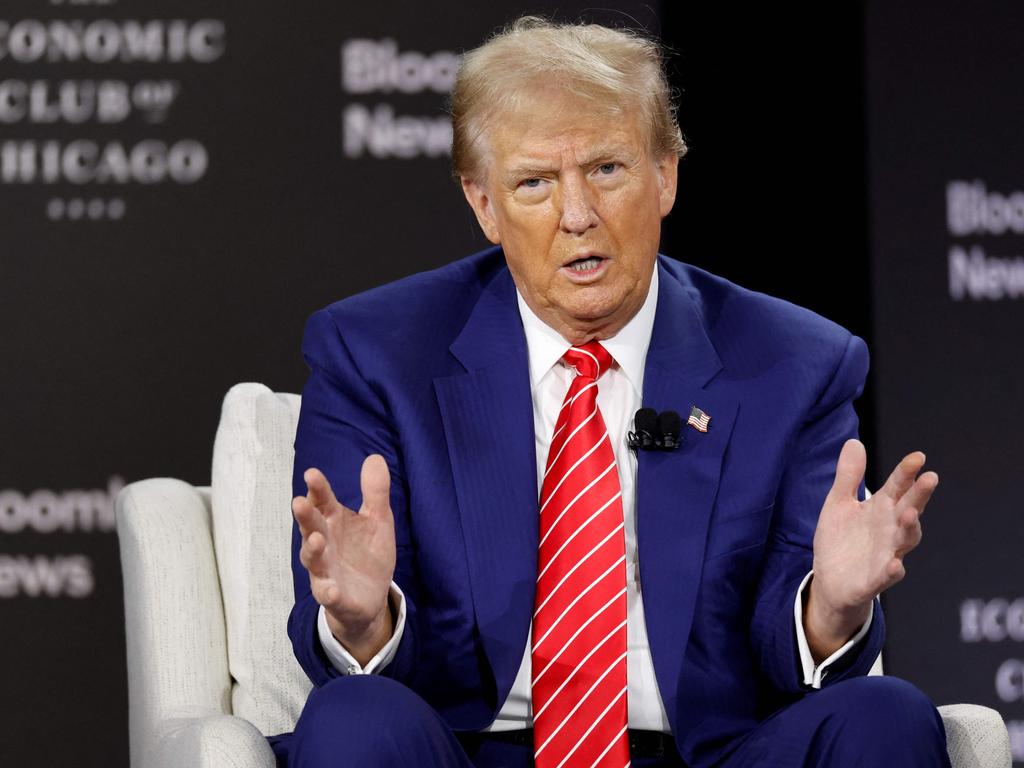
The Israeli Prime Minister’s statement followed US President Donald Trump’s demand a day earlier that “all hell” would “break out” unless all the Israeli hostages were released by Saturday.
While these statements might have appeared to be in alignment, there was an ambiguity to the Israeli Prime Minister’s words that reflects the complexity of Netanyahu’s precarious situation.
Trump’s call, explicitly, was for the immediate return of all the remaining hostages.
Netanyahu’s, however, might quite reasonably have been interpreted as referring only to the three whose release had been scheduled for Saturday.
The difference here is significant. Trump’s ultimatum, if followed, implies that a failure by Hamas to release all remaining hostages on Saturday will bring about the collapse of the ceasefire deal in its entirety, inevitably followed by a swift return to fighting.
Netanyahu’s statement, by contrast, suggests that if Hamas continues to implement the agreement, as it has now indicated it will, then a return to conflict may be avoided at this stage.
Trump’s words appeared to reflect an impatience with the details of the deal, and an underlying fury against Hamas in response to recent evidence of its shocking mistreatment of the Israeli hostages. This fits with the US President’s other recent comments regarding the need for root-and-branch change in Gaza, including the relocation of its population to neighbouring countries before its reconstruction.

One can only speculate, of course, regarding the extent of co-ordination between the American President and the Israeli Prime Minister in this regard. But the general impression is that senior Israelis have been as surprised by Trump’s recent statements as everyone else.
Netanyahu, consequently, appears to be engaged in deliberate ambiguity to avoid confrontation with:
● Trump – the Prime Minister doesn’t want to appear to not be endorsing the US President’s much more forceful demands.
● The hard right-wing element in the Israeli cabinet, who are similarly alert to any sense that Netanyahu may not be fully behind the defeat and destruction of Hamas.
● The hostages’ families and their many supporters among the Israeli public, who fear that any return to conflict may endanger the survival of the remaining hostages.
The Israeli Prime Minister, in other words, is seeking to keep his options open. But what, in fact, is his preferred direction?
It has been clear from the start that the implementation of the first phase of the deal does not indicate an ending of the war or a comprehensive failure of Israel’s war aims.
This is because this first phase involves the delaying of talks regarding a permanent ceasefire and future governance in Gaza, and includes the continued deployment of the Israel Defence Forces within the area.
To be sure, it involves painful Israeli concessions.
In return for the release of 33 hostages, Israel is to release 1900 Palestinian prisoners, including people serving life sentences for the deliberate murder of Israeli civilians.
Yet this phase does not close the door on a subsequent continued prosecution of the war.
The second phase of the agreement, by contrast, is set to put in place arrangements that will attest to the conclusive failure of Israel’s war effort.

This second phase is to include a permanent ceasefire and the complete withdrawal of Israeli forces from Gaza, along with the freeing of an additional large number of Palestinian prisoners, in return for the freeing of the remaining hostages.
The central stated aim of Israel’s ground offensive in Gaza was the destruction of the Hamas governing authority in this area. This Hamas authority, in power since 2007, was the structure that ordered and carried out the massacres of October 7, 2023.
Anything less than the removal of Hamas from power in Gaza will be seen by all sides and by outside observers, justifiably, as the failure of Israeli war aims. Currently, these aims have not yet been achieved. Hamas remains the de facto power in Gaza in all areas where Israel is not present.
The first phase of the ceasefire deal leaves this question open. The second phase does not. It sets the result in stone.
Given this, it appears likely that the Israeli Prime Minister’s aim is to complete the implementation of the first phase, after which a return to military operations aiming at the destruction of the Hamas authority will take place.
At that point, somewhere between 20 to 30 living hostages would remain in Gaza. Netanyahu’s statement subtly distanced him from Trump’s position because the demand for the release of all hostages at this stage would threaten to collapse the deal prematurely, preventing the release of the remaining hostages scheduled to be freed in phase one.
So if this is Netanyahu’s plan, will it work? Hamas will be aiming to frustrate any further Israeli military effort by the simple and devastating tactic that it has maintained throughout: namely, seeking to mobilise Israeli public opinion against the Israeli government by threatening the death or permanent incarceration in brutal conditions of the remaining hostages, unless Israel acquiesces to continued Hamas rule.

The Palestinian Islamists evidently think they have cracked the code of something fundamental to Israel’s societal DNA, and can frustrate Israel’s advance and ensure victory for as long as this aspect remains available for activation. They are unlikely to change this assessment based on the small number of hostages that will remain after the first phase of the agreement.
After all, they will reason, in 2006 Israel released 1027 prisoners (including the late Yahya Sinwar, architect of October 7) in return for a single Israeli hostage, the IDF soldier Gilad Shalit.
Hamas will thus conclude that any Israeli effort to return to the war will be rapidly frustrated by the reapplication of this tactic.
Are they wrong? From the start, Hamas has placed a simple and psychotically cruel dilemma before Israeli decision-makers: accept the loss of civilian hostages or accept the loss of the war. They have believed (with considerable evidence) that Israel’s leaders will always prefer the latter option.
Israeli victory in Gaza, and an appropriate outcome to the war Hamas began with the slaughter of October 7, depends on Netanyahu at a certain point choosing the former.
What will he (and Israel) choose? On this question hangs the outcome of the Gaza war, probably also the future direction of the Israeli-Palestinian conflict, and possibly also the long-term viability of Israel itself.
It’s for this reason that Hamas is keen to begin talks on the second phase of the deal, and is demanding that they start immediately. Spokesmen for the movement hold Israel responsible for the delay, claiming that the Netanyahu government is deliberately dragging its feet and placing obstacles in the way of beginning the second phase. Israeli officials quoted in the Hebrew media expressed the view that Hamas may be seeking even to expedite the stages of the deal. If this is accurate, their effort is entirely understandable. The latter phases of the deal are the point at which Hamas may begin to claim victory.
Jonathan Spyer is a Jerusalem-based journalist and analyst on Middle East affairs.






On Tuesday, Benjamin Netanyahu said fighting in Gaza would resume unless “our hostages” were released by Saturday.